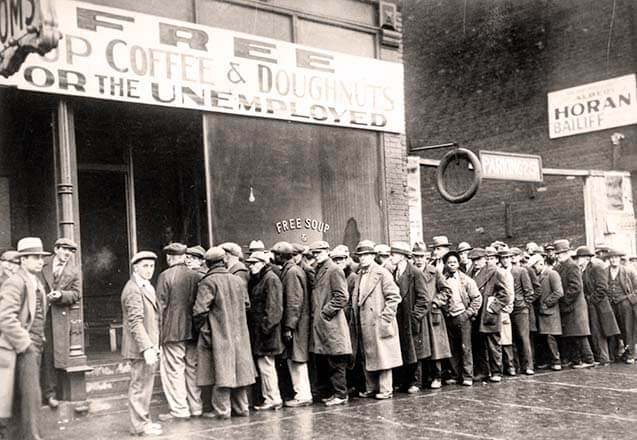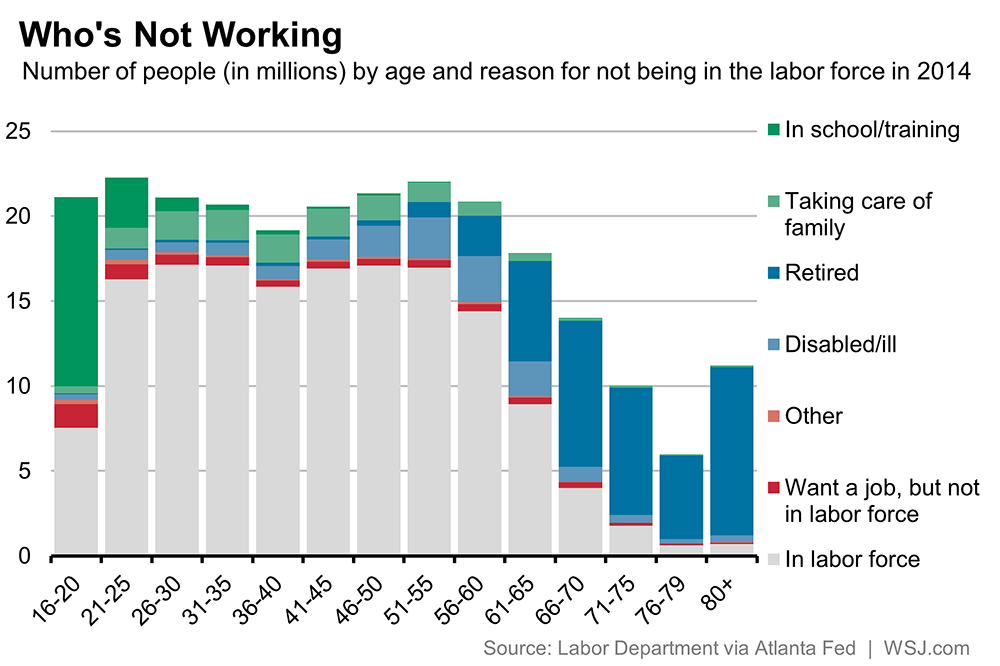Ricochet is the best place on the internet to discuss the issues of the day, either through commenting on posts or writing your own for our active and dynamic community in a fully moderated environment. In addition, the Ricochet Audio Network offers over 50 original podcasts with new episodes released every day.
 No, There Aren’t More Than 90 Million Americans Unemployed
No, There Aren’t More Than 90 Million Americans Unemployed
 Back in August, Donald Trump told Time:
Back in August, Donald Trump told Time:
You have 90 million people that aren’t working. Ninety-three million to be exact. If you start adding it up, our real unemployment rate is 42 percent.
While I usually don’t hear much about the “real” unemployment rate being that high, I frequently hear claims about 90-some million Americans being “jobless” or “out of work” or “on the sidelines” and so forth.
The goal seems to be to suggest we are in the midst of an economic downturn worse than the Great Depression and its 25 percent unemployment. And if you assume all those folks want jobs and are trying to get them, then Trump is right. But as the below chart shows, that is not an accurate depiction of who those 90 million non-workers are:

WSJ reporter Josh Zumbrun:
Big pieces of this chart are no mystery at all. About 41 million Americans don’t work because they’re retired. These retirees are overwhelmingly actually of retirement age. It makes perfect sense to consider them outside the labor force (another way of saying it makes little sense to consider them unemployed). An additional 15 million say they’re not in the labor force because they’re in school. Some students, of course, work while they’re in school. They’re in the labor force. Those who are looking for work and can’t find any are classified as in the labor force, but unemployed. … The decline in the labor-force participation rate defies simple explanation. But that’s not the same as saying it’s unexplained. In fact, it’s just that many things have been happening at once. There are more young people who aren’t in the labor force because they’re in school. There are more retirees. There are more middle-aged people on disability. …
None of this is to say that the American economy is unbelievably great or unusually rosy. By almost any conventional labor market measurement the economy has yet to recover from a recession that started almost eight years ago. But the notion that 92 million Americans are unaccounted for, that there’s a conspiracy in these statistics, or that we have no idea what 20 million prime-age Americans are up to, just isn’t right.
Faster growth would probably boost participation. So, too, disability reform. And it might be possible increase work among older Americans through tax policy. But it’s non-factual to suggest that nearly 100 million American are unemployed or jobless as the terms are commonly used. For more on labor force participation, here is my recent blog post, “Why labor force participation rates may not rise anytime soon.”
Published in Economics



Many, many years ago when I was in college, I remember being taught in Macroeconomics that 5% unemployment was “full employment” and that you could never get below that number because of people transitioning jobs, the hard-core unemployable, the disabled, etc. Then come the late 90s and the mid 00s and unemployment gets below the number it could never get below.
Now we are told that unemployment is 5.1% (nearly full employment again) It sure doesn’t “feel” like everyone has a job who could possibly be employed. The economy sure doesn’t “feel” like its humming along. It doesn’t “feel” like the late 90s or mid-00s.
It’s enough to make you doubt the statistics.
Speaking of defying simple explanation, why are retirees counted as “not working” in the labor-force-participation rate if they’re not part of the labor force?
I wish there were some way to move people on and off SSDI–the social security program for permanently disabled people. Some people would not be “permanently” disabled if there were a short-term program–a year or two–that was combined with rehabilitation and job-finding help. We could help people get on their feet, which most of the disabled people I have known would really prefer and appreciate. The temptation to stay on it permanently comes from how difficult it is to get on it in the first place. We need to build in some flexibility.
We also need to look at the causes of permanent disability and whittle away at those wherever we can–such as reducing medical errors.
The two people I know on disability include one that has “panic attacks” when around a lot of people at work, and the other has a “learning/mental” condition. Although they aren’t “brilliant,” if we had a very small Ricochet meet-up at their homes, they could carry on a reasonable conversation with those present. I don’t know all the particulars, but I’m certain both could be productive people in some capacity.
I get the feeling that the red marker on your graph (Want a job, but not in labor force) does not include people who may be in the other categories (Retired, Disabled, Taking care of family, etc.) that want a job, but are doing the other things because they have to because they need the money (jobs not available).
I think the graph needs a more detailed breakdown.
I too have known people who could be moved into mainstream society with more help than we can give them with our existing programs. I really wish we could do this.
Rumsfeld and his strategic, flexible, small strike forces really resonated with me for an approach to social services.
Yes, I know many “unemployed” people nursing their awful predicament on their superyachts in Miami and in their 5,000 sq ft homes in the Hamptons and in Aspen.
If I recall correctly without doing a lot of research, the “normal” labor participation rate over the last 50 years or so is around 63% and we are now at about 59%. I suspect that it should be more like upper 60’s, and a lot of safety net programs of the last 50 years are responsible, so we do have a goal to reduce the number (whether SSDI, or TANF, or local welfare is the enabler).
But 8% of 330 million is not 90 million. In less than a year, I intend to join the idle, but I won’t be “unemployed”.
So what? Let Trump repeat the BS statistic. If it’s repeated often enough, it will be as true as women earn 77% of what men earn. Hammer the [poop] out of it until it’s conventional wisdom. Time to start lying good and hard like the Dems.
It’s not just how difficult it is to get on – it’s not as difficult as it used to be – it’s how difficult it is to get off it. I was on full, permanent SSDI due to a brain injury in 2002. In 2004, I felt I was recovered enough to go back to work, and was advised by someone in SSDI (when I got them on the phone) that it’s just easier to stay on SSDI.
So, in other words, don’t even try to go back to work. Stay home. Don’t retrain, learn a new skill. Stay home.
And vote for people who extend SSDI benefits.
Maybe Trump is counting children in the number of people not working. That’s why his number is so HUGE!
I have heard that from other people too.
I think we need a more flexible long-term disability program.
Among people I’ve known who have dealt with serious long-term disability, the biggest impediment to getting off SSDI is the loss of Medicaid for the transition period.
To me, it just doesn’t make any financial sense to not help people become as independent as possible. They need some help but perhaps not total support.
This is a country filled with intelligent creative people. This problem seems so fixable.
I have a coworker whose cousin is on SSDI. His disability – no kidding – is that it made him angry whenever a boss told him how to do his job. I’ve known other people whose disability was an addiction to alcohol or less-legal substances.
122.3 million Americans work at least 5 hours a day/318.9 million total Americans
Looks like 62% unemployment to me. Who says employment is based upon age? Either you are working or not. Yes or no. It’s simple. And I also remember when there were only two genders — male and female.
For full employment all you need is a Logan’s Run society where the citizens disappear at age 18 instead of age 30. Would it be ideal to have a Lord of Flies society? No. Are those under age 18 or over age 65 being taken care of by themselves and their families or by the American employees who are the taxpayers?
Egads, that number of “disabled” middle-aged people is depressing. I’m sure many are genuinely disabled but I’ll bet half or more of that stat is bogus. Makes me sick.
Trump’s figure of 93 or 94 million?
And that’s on top of almost six and a half million part time workers who would rather be full time.